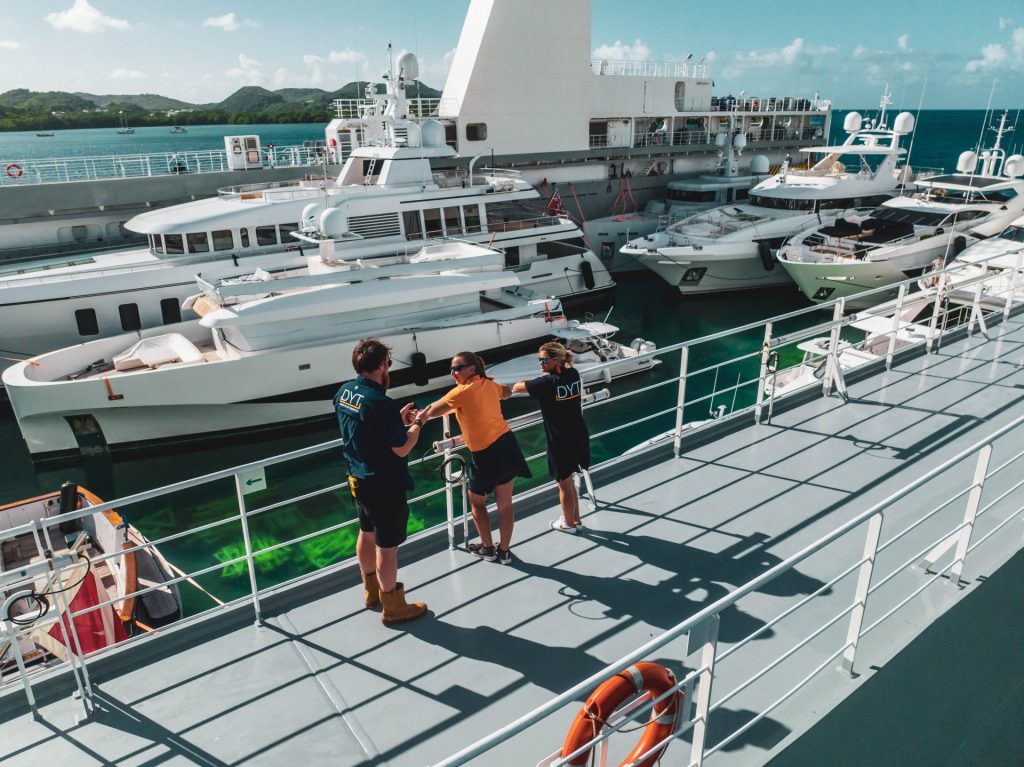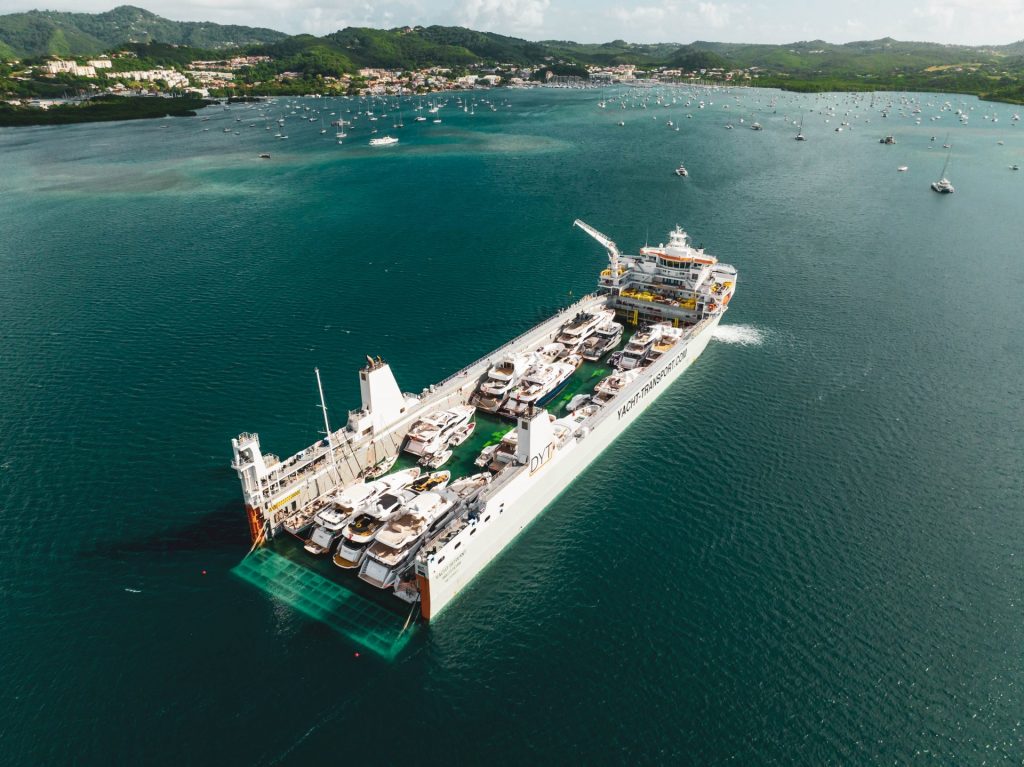A growing number of Superyachts are being shipped across the oceans in good time and good condition thanks to carriers that move larger vessels between locations. Essentially, yacht transport is shipping a yacht to its destination without sailing and motor power, eliminating wear and tear also. This method can be a more cost-effective, safer, and reliable option.
In this article, we explore the ins and outs of yacht transport, as well as hearing from Laura Tempest from DYT Yacht Transport on the benefits of using their services.

Why Use A Yacht Transport Service?
1. Distance/Range: Certain routes may require Superyachts to travel long distances across open seas. However, yachts with insufficient fuel capacity are unable to complete long-distance routes.
2. Crew holiday: For busier yachts, transporting your yacht allows the crew to take a holiday. They’ll appreciate some downtime in between the working season.
3. Cost: Transporting a Superyacht on its own can be expensive due to fuel costs, maintenance, and other expenses. Using a transport carrier can be more cost-effective (sometimes), especially for longer distances.
4. Avoid wear and tear: When travelling long distances, there’s a higher risk of potential damage to a vessel. When harsh weather conditions, navigational challenges, and other factors are at play, yacht transport carriers provide a safe and efficient route. Carriers have specialised equipment and trained personnel to safely load and secure Superyachts during transportation. This lowers the risk of damaging the vessel and ensures that it reaches its destination in good condition.
5. Timing: Sometimes, a yacht is booked to charter a new destination and the timing is too tight for the vessel to navigate to the new location on its own.

What Are The Most Common Routes?
- Mediterranean – Caribbean
- Central America / Med / US East Cost – Pacific
- US East Coast – Med / Central America / Pacific / Caribbean

Read More SYC News: This App Is A Game Changer For Captains Cruising The Med
An Insight Into Yacht Transport With Laura Tempest – General Manager Of DYT Yacht Transport
SYC: What are the main reasons to choose yacht transport?
Laura Tempest: There are many reasons to choose yacht transport vs. going on your own keel. For many yacht owners, the potential for maintenance issues that could occur are not something to risk on an Atlantic crossing. Wear and tear on the yacht thus reducing the value is also of consideration. There is also a large number of yachts that don’t have the range to cross the Atlantic without making many stops along the way. Taking these factors into consideration, the cost of shipping vs going own keel are often not too far from each other.
SYC: What are the main yacht transport routes?
LT: For DYT Yacht Transport we focus almost 80% of our ships schedules to transport between the Western Mediterranean the Caribbean and US East Coast and vice versa. This has proven to be a popular route for over 30 years.
SYC: How would one choose the right yacht transport company?
LT: Clients of DYT typically choose us because we have delivered on a trusted sailing schedule since we started in the early 1990’s. We only ship yachts on these seasonal offerings, to and from the Mediterranean, which eliminates any chance of our schedule being jeopardized to pick up other cargo or make additional stops along the way. Our schedule is driven by many of the industry events yacht owners like to attend so reliability on our schedule is paramount.
SYC: What are the typical steps for getting a yacht ready for transport?
LT: Any yacht being shipped needs to prepare for an ocean crossing. All loose items (like cushions or bimini tops) must be secured or removed all together and stored in an inside location. Decks can be covered to protect them from the elements. Inside the yacht, any perishables would need to be discarded as the yacht will not have power during the crossing.
For more information, visit the DYT Yacht Transport website. DYT is a dedicated yacht transport service based on a unique fixed schedule and special semi-submersible vessels.
Keep up to date with the latest Superyacht Content News and sign up to our Newsletter below:





.gif)















